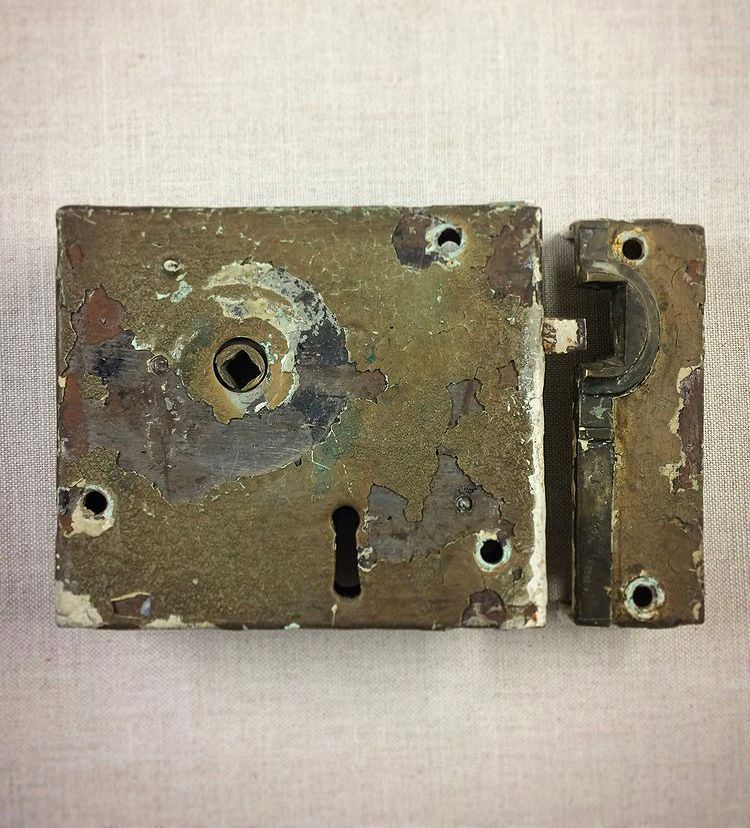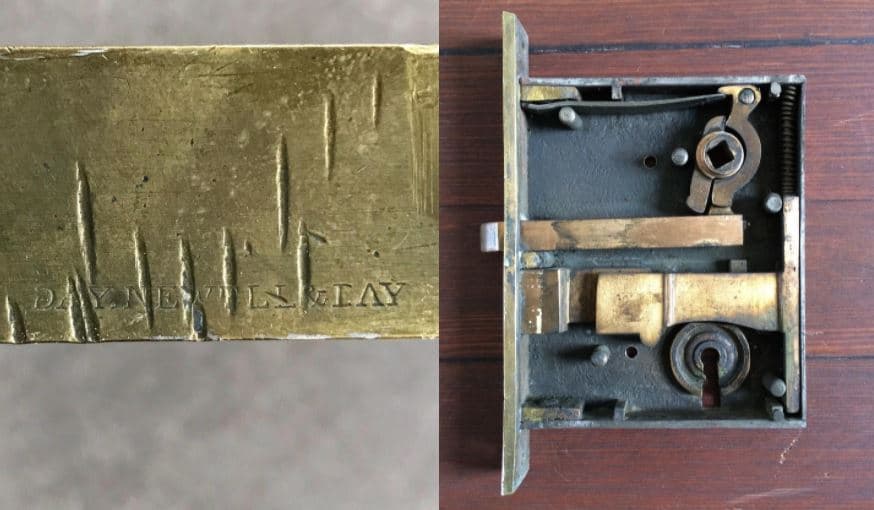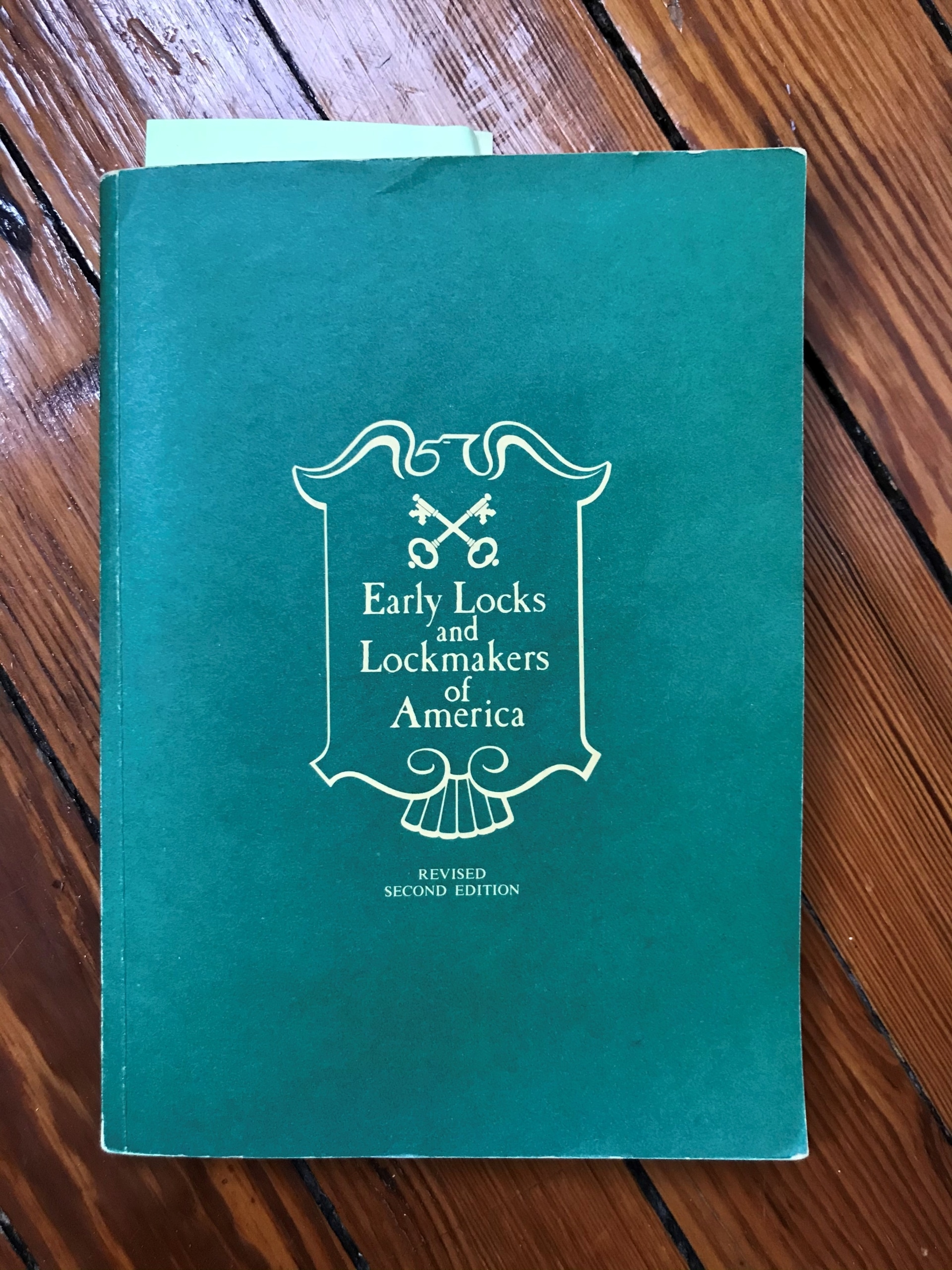
Our recent discoveries and work in the Cottage parlor (see here) also included maintenance and research on some of the Cottage’s historic door and window hardware. In honor of Preservation Month, our Senior Preservationist, Jeff Larry, discusses his findings:
When the Cottage was built in 1842 most locksets, and other door and window hardware, were imported from England. In his 1976 book, Early Locks and Lockmakers of America, the author Thomas Hennessy notes this trend in a quote he pulled from an 1862 lock company catalogue:
“It is difficult today to conceive of the inveterate prejudice that existed only twenty-five years ago, against American Manufacturers. Hardware men would scarcely look at an American lock, and the man that offered them felt called upon to make a hasty retreat, fearing extra inducement. They scouted the idea that the Americans could compete with the English manufacturers. Commission houses would take them and one by one work them off. The Company’s resources were locked up in piles of unsaleable goods and bankruptcy stared them in the face. This was the position of affairs in 1841.”
The original “specifications of materials and workmanship” for the Cottage, written by builder William Degges, call for British made “Carpenters 6 inch rim locks” on all of the second floor doors. Unlike a mortise lock which is placed inside the door stile, a rim lock is mounted to the surface of the door. It is easier to install and allows for a thinner, less expensive door. However, as is frequently the case, building plans change and the cheaper rim locks were relegated to the attic and basement doors. The lock pictured here is the Cottage’s last remaining original Carpenters rim lock.

The first and second floor doors received mortise locks, but, surprisingly, they did not come from the British ironmongers they came from an American lock maker! Twenty years before Yale & Towne and Russel & Erwin there was lockmaker Day, Newell & Day and they were making really good locks.

The three men set up shop in 1833 at 589 Broadway in New York City and, despite the occasional fisticuff and raised cane by two of the bickering brothers, they managed to produce locks that won numerous awards and accolades. But, what really got the firm attention was Newell’s 1844 patented Parautoptic Bank Lock and victories at lock picking competitions in England that resulted in them being named special patrons and protectors to her Majesty Victoria’s Crown Jewels. Though the business was passed down to their sons it seems one of the elder Days never relinquished his passion for locks and lock picking as revealed in this story from son John Day, “I took him to the sanitarium and saw him well placed in a room and the door securely locked as supposed, but when I got home I found the old gentleman sitting contentedly in his accustomed chair…”
For PART 2 click here…


